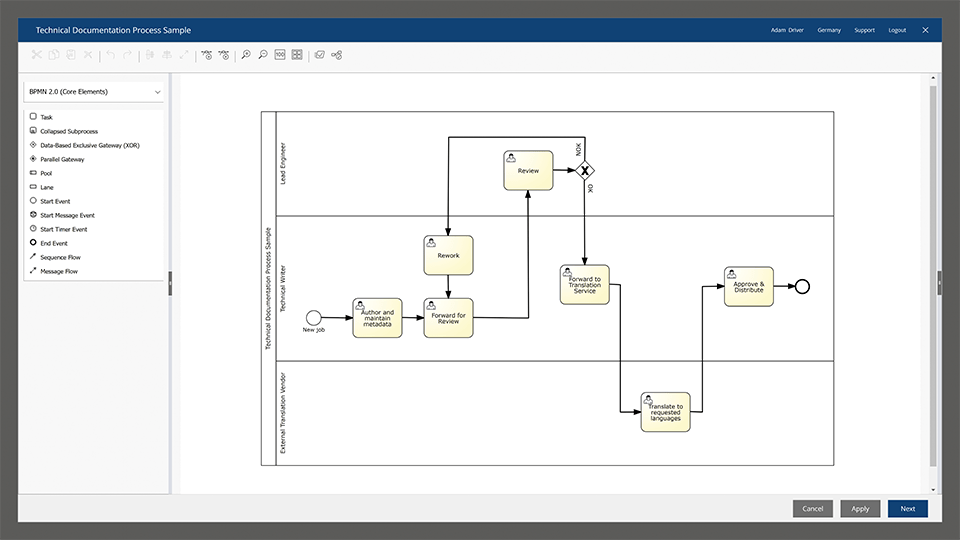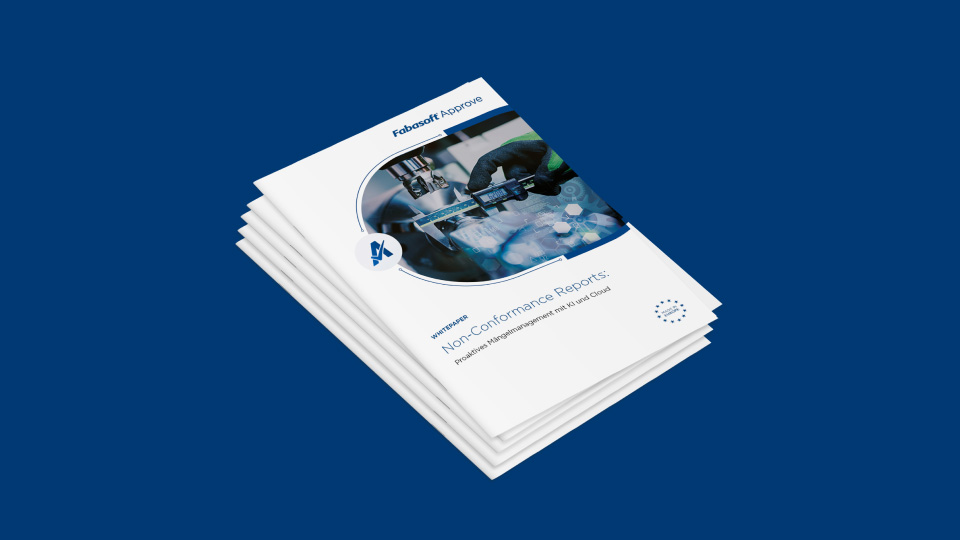In organizations that encompass multiple departments with employees working in several locations, the process of coordinating and collaborating comes with its share of challenges. For these companies, work processes can be both time-consuming and prone to errors. Well-organized workflow management helps make collaboration easier and more transparent by ensuring that tasks and responsibilities are clearly assigned.
What is a workflow?
A workflow can be defined as a structured sequence of specific activities. It consists of a number of separate, often repeatable activities that are related logically and chronologically. These activities always have a starting point and an end point that trigger or end a process.
What are the different kinds of workflows?
There are several types of workflows, with the following being the most relevant:
- Sequential workflows involve planning work steps in a fixed order, with each activity only starting after the previous step has been completed.
- Rule-based workflow processing initiates downstream activities based on defined workflow rules.
- In the case of parallel workflow processing, at least two steps in a group are carried out simultaneously and independently of each other. The next activity begins after all of the steps in this group have been completed.
- In a split-merge workflow, the workflow is divided into several sub-processes that are executed in parallel and later merged into a single process.
- Application-driven and ad-hoc workflow processing allows users to manually delegate or skip work steps.
- Case-specific workflows are helpful when the various steps from start to finish are not clear in advance. They use “what if” rules, which are particularly helpful in situations such as technical support requests.
- Process-driven workflows repeat on an ongoing basis, for instance in a company’s accounting department. Incoming invoices are captured automatically, cross-checked, and only processed by the team if there are discrepancies; this leaves the team free to focus on more important tasks.
- Project-based workflows combine elements from case-based and process-driven workflows and are typically utilized for larger projects.
What is the difference between a workflow and a business process (BPM)?
A business process centers on the business aspects and the visual representation of the work steps, whereas a workflow outlines the technical work steps in detail. Because they define “what” needs to be done at a technical level, business processes have strategic significance, but are less detailed than workflows.
In contrast, a workflow describes not only the “what” but also the “who” – much like detailed work instructions. This supports employees with their tasks and can even facilitate automated processing. Workflows are key when it comes to coordinating business processes with precision.
What is BPMN?
BPMN stands for Business Process Model and Notation and is a graphical specification language in process management – in other words, it’s a way to depict business processes visually. In this context, the focus lies primarily on BPMN 2.0, the current standard for business process modeling. This specification language contains predefined symbols that represent each process and action. As a result, work steps can be presented in a standardized way that all employees can understand. Responsibilities are clearly assigned.

What are the objectives of workflow management?
Alongside the primary aim of workflow management, which is to coordinate the work of all of a company’s employees and control the process flow, structured workflow management offers further advantages:
- Improving the quality of work processes
- Digitalizing analogue or manual processes
- Standardizing business processes
- Reducing both workload and costs
- Eliminating incompatibility in systems, applications, and other media formats
- Increasing process flexibility and adaptability
- Greater transparency
What is a workflow management system?
A workflow management system refers to software that controls, monitors, and analyzes all of a company’s workflows. This means that even employees without specific technical skills are able to create and model workflows. These types of systems offer both standardized work processes and customization features that can be used to create tailored, company-specific processes. The most advantageous option is to use an all-in-one content management system (CMS), such as Xpublisher, that features a fully integrated workflow engine. With an all-in-one CMS, companies don’t have to integrate a single workflow engine into their existing infrastructure.
What are the challenges in workflow management?
When workflows are too rigidly defined, they often pose challenges for companies when unexpected events occur. If the workflow cannot be adapted on the spot, the process suffers delays or even stops altogether.
What’s more, many systems feature only predefined processes that are not precisely tailored to the company’s business logic. That’s why it is important to have a system that allows a company to adapt its processes and tailor them to its own needs. Along with the predefined workflows, Xpublisher offers ad-hoc workflows that employees can use to adapt workflows in an agile manner.
Xpublisher – the workflow-based end-to-end CMS
Xpublisher is an end-to-end multichannel publishing software that features an integrated workflow engine. This built-in workflow engine assigns and manages tasks and responsibilities directly in the system. The entire content lifecycle is managed right in the software, from identifying topics and creating content to publishing and recycling the content across all pertinent media platforms.




